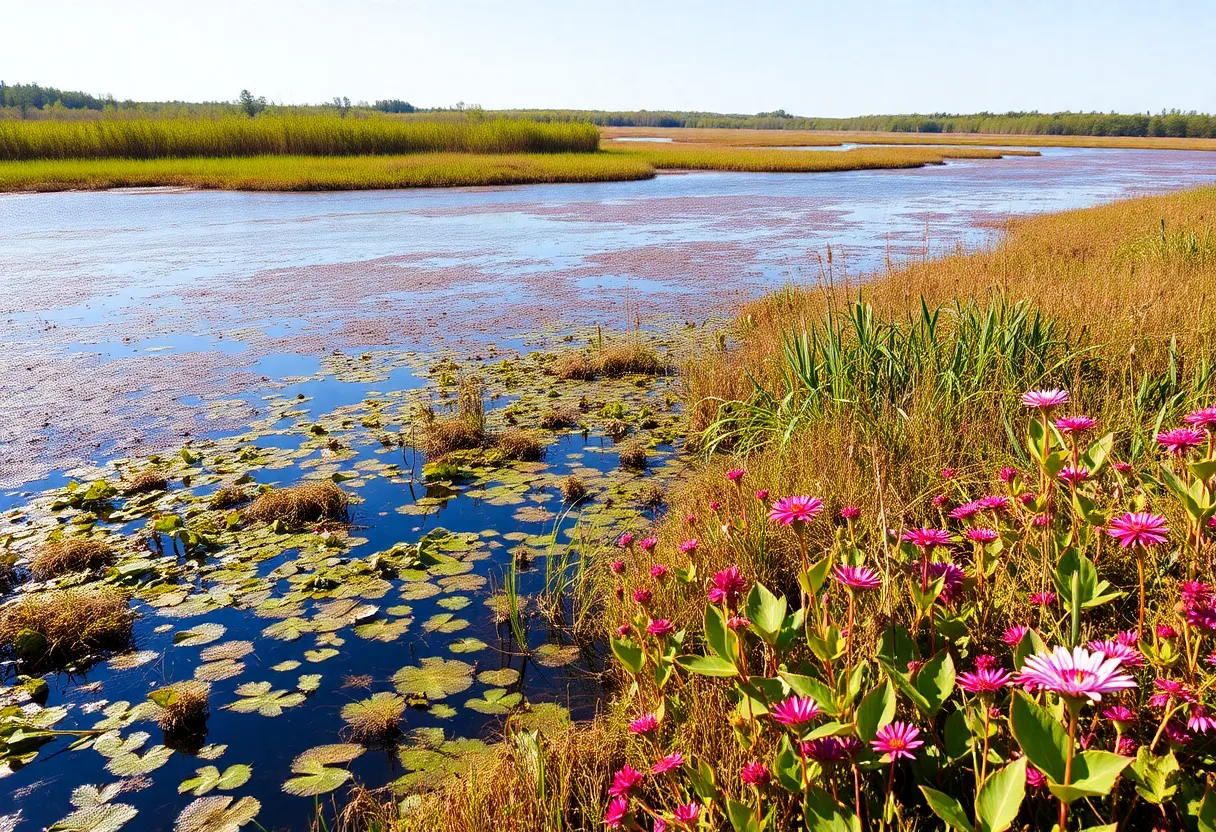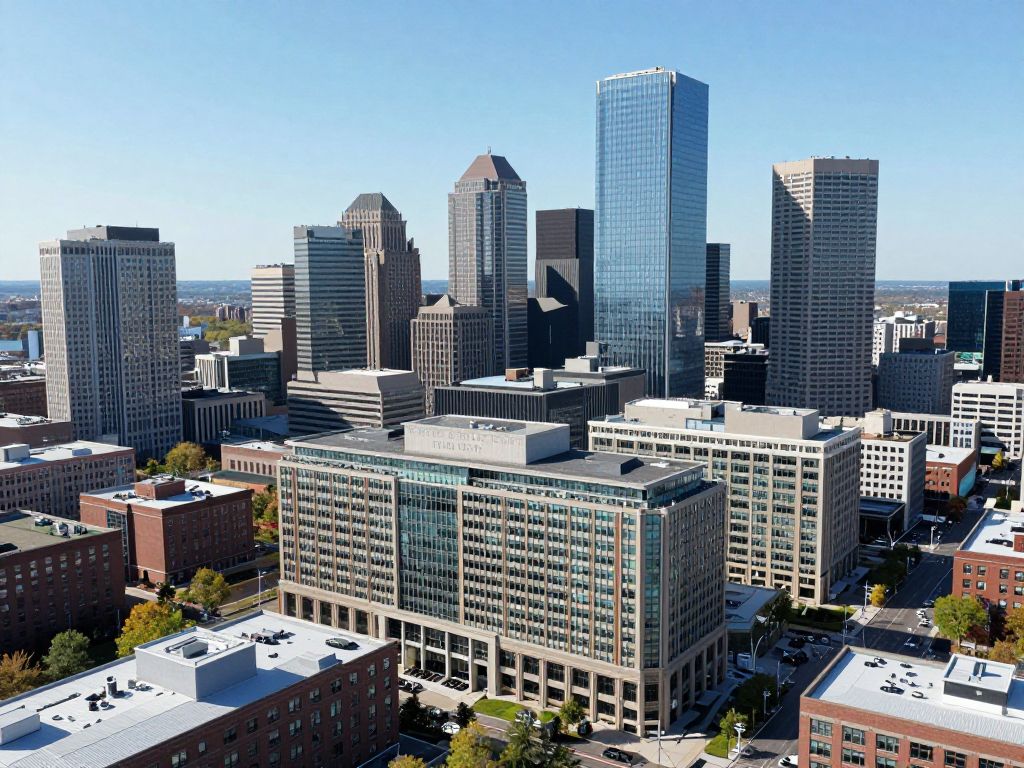News Summary
In Massachusetts, cranberry growers like Jarrod Rhodes are restoring unproductive cranberry bogs into wetlands as part of a state initiative to enhance ecological sustainability. With increasing competition and declining prices, this shift aims to benefit both the environment and the local economy. The Massachusetts Division of Ecological Restoration is funding these projects, encouraging farmers to adapt to climate challenges and explore conservation methods. As more bogs are converted, local wildlife habitats improve, showcasing the potential for sustainable agriculture in the region.
Massachusetts is witnessing a significant transition in its cranberry farming landscape as farmers like Jarrod Rhodes, a fourth-generation cranberry grower, convert their unproductive cranberry bogs into wetlands. This initiative is part of a state project aimed at restoring natural ecosystems in an effort to contend with economic challenges faced by the cranberry industry.
The restoration project on the Rhodes family land is already around 95% complete, with plans for the area to evolve into a natural swamp over the next decade. This shift not only addresses declining cranberry prices due to global competition but also enhances ecological sustainability.
The Massachusetts Division of Ecological Restoration’s Cranberry Bog Program is pivotal in this transition by compensating farmers to restore bogs that are no longer economically viable. Over the last 15 years, the state has successfully restored more than 500 acres of wetlands and aims to restore an additional 500 acres. The restoration program allocates approximately $1 million annually, utilizing both local and federal grants.
Massachusetts remains a key player in the cranberry market, operating around 13,250 acres of active cranberry farms and holding the position of the second-largest cranberry producer in the United States, following Wisconsin. Yet the cranberry farming sector faces stiffer competition, rising costs, and challenges posed by climate change, necessitating innovative approaches to farming and land use.
While restoring bogs, farmers are realizing the potential ecological benefits, as many originally settled on wetlands, and the area’s restoration supports ecological health. As seen with the Eel River headwaters restoration project in Plymouth, former bogs have become vibrant wetlands that enhance local wildlife habitats and are now available for public recreation.
The South Meadow Bogs Restoration project, costing $1.1 million, is another significant effort to convert a 32-acre bog into functional wetland habitat. This project is expected to revive native plant species and offer habitats for various wildlife, emphasizing the commitment to sustainable agricultural practices amid changing environmental conditions.
The cranberry farming industry is under pressure as farmers adapt to the realities of climate change, increasing labor costs, and inconsistent market prices. In light of these challenges, many Massachusetts cranberry growers are exploring conservation as a viable alternative to revenue-generating options like solar farms and housing developments, which may compromise food production and agricultural viability.
The trend toward bog restoration reflects a broader movement towards sustainable agriculture and environmental sensitivity as farmers seek innovative solutions. With rising sea levels and unpredictable weather patterns impacting farming operations, transitioning unproductive bogs back to wetlands not only preserves farmland but offers a promising path for farmers preparing for retirement or new sustainable ventures.
The local community is also becoming actively involved in these ecological restoration initiatives, aiming to balance agricultural needs with the preservation of local ecosystems. This collaborative approach offers residents opportunities to engage with restored environments while ensuring that farming continues to thrive alongside conservation efforts.
Overall, Massachusetts’ cranberry industry is at a turning point, where the embrace of wetlands restoration projects provides a sustainable solution tailored to economic pressures and ecological demands. As farmers confidently shift their focus, the long-term benefits of these initiatives are poised to enrich both the environment and the local community.
Deeper Dive: News & Info About This Topic
- CBS News: Massachusetts Cranberry Farmers Restoring Wetlands Amid Economic Headwinds
- Wikipedia: Cranberry
- Bangor Daily News: Massachusetts Cranberry Bogs Given a Second Life as Wetlands
- Google Search: Cranberry Bogs Restoration
- EcoWatch: Massachusetts Cranberry Bog Solar Power Plant
- Encyclopedia Britannica: Cranberry
- Wicked Local: Carver Massachusetts Cranberry Bogs Harvesting Video
- Google News: Cranberry Farming Massachusetts

Author: STAFF HERE BOSTON WRITER
The BOSTON STAFF WRITER represents the experienced team at HEREBoston.com, your go-to source for actionable local news and information in Boston, Suffolk County, and beyond. Specializing in "news you can use," we cover essential topics like product reviews for personal and business needs, local business directories, politics, real estate trends, neighborhood insights, and state news affecting the area—with deep expertise drawn from years of dedicated reporting and strong community input, including local press releases and business updates. We deliver top reporting on high-value events such as Boston Marathon, Head of the Charles Regatta, and Boston Harborfest. Our coverage extends to key organizations like the Greater Boston Chamber of Commerce and Associated Industries of Massachusetts, plus leading businesses in finance, biotech, and insurance that power the local economy such as Fidelity Investments, Biogen, and Liberty Mutual Insurance. As part of the broader HERE network, we provide comprehensive, credible insights into Massachusetts's dynamic landscape.





